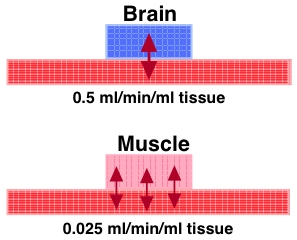
Diagram 18.3.1 Comparison between Drug transfer to Brain and Muscle
return to the Course index
previous | next
| Rate of distribution | Extent of Distribution |
|---|---|
| Membrane permeability Blood perfusion |
Lipid Solubility pH - pKa Plasma protein binding Tissue protein binding |
For drugs which can be ionized the drug's pKa and the pH of the blood will have a large effect on the transfer rate across the capillary membrane.
There are two deviations to the typical capillary structure which result in variation from normal drug tissue permeability.
i) Permeability is greatly increased in the renal capillaries by pores in the membrane of the endothelial cells, and in specialized hepatic capillaries, known as sinusoids which may lack a complete lining. This results in more extension distribution of many drugs out of the capillary bed.
ii) On the other hand brain capillaries seem to have impermeable walls restricting the transfer of molecules from blood to brain tissue. Lipid soluble compounds can be readily transferred but the transfer of polar substances is severely restricted. This is the basis of the "blood-brain" barrier.
Membrane permeability tends to restrict the transfer and distribution of drugs once they are delivered to the tissue. The other major factor which determines the rate of drug distribution is blood perfusion.
| Organ | Perfusion Rate (mL/min/mL of tissue) |
Percent of cardiac output (CO) |
|---|---|---|
| Bone | 0.02 | 5 |
| Brain | 0.5 - 0.55 | 14 - 15 |
| Fat | 0.01 - 0.03 | 2 - 4 |
| Heart | 0.6 - 0.7 | 4 |
| Kidneys | 4.0 - 4.5 | 22 - 24 |
| Liver | 0.8 - 0.95 | 25 - 27 |
| Muscle | 0.025 - 0.030 | 15 |
| Skin | 0.04 - 0.05 | 5 - 6 |
Total blood flow is greatest to brain, kidneys, liver, and muscle with highest perfusion rates to brain, kidney, liver, and heart. It would be expected that total drug concentration would rise most rapidly in these organs. Certain smaller organs such as the adrenals (1.2 - 5.5 mL/min/mL or 0.2 - 1% CO) and thyroid (2.4 - 4 mL/min/mL or 1 - 2% CO) also have large perfusion rates.

Diagram 18.3.1 Comparison between Drug transfer to Brain and Muscle
As an example; thiopental gets into the brain faster than muscle, whereas, penicillin gets into muscle more quickly than it gets into brain.
i) Thiopental is only partly ionized and passes into the brain or muscle easily. Perfusion limits the transport. Since brain has a higher perfusion rate the thiopental can transfer in and out more quickly.
ii) Penicillin is quite polar and is thus slowly permeable. Permeability limited transfer is faster in muscle as muscle capillaries are less restrictive. Thus transfer of penicillin is faster in muscle than brain.
In brain, perfusion or membrane permeability limits drug transport or distribution. Thiopental diffuses readily, thus perfusion limits its distribution. Since perfusion is higher to the brain than to muscle, transport to the brain is faster. Penicillin less readily diffuses thus it is diffusion which limits penicillin distribution. Muscle diffusion is easier thus distribution into muscle is faster for penicillin than distribution into brain.
Material on this website should be used for Educational or Self-Study Purposes Only
Copyright © 2001 - 2025 David W. A. Bourne (david@boomer.org)
 |
The Book Pharmacokinetics This Course in ePub format |
 |